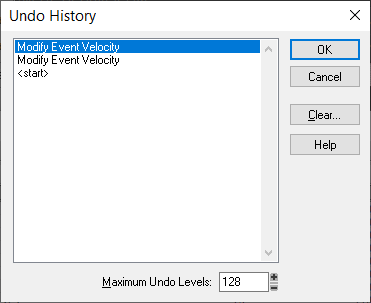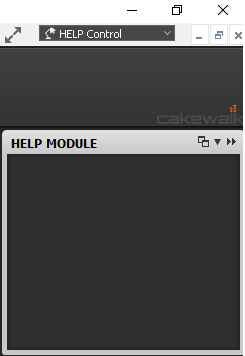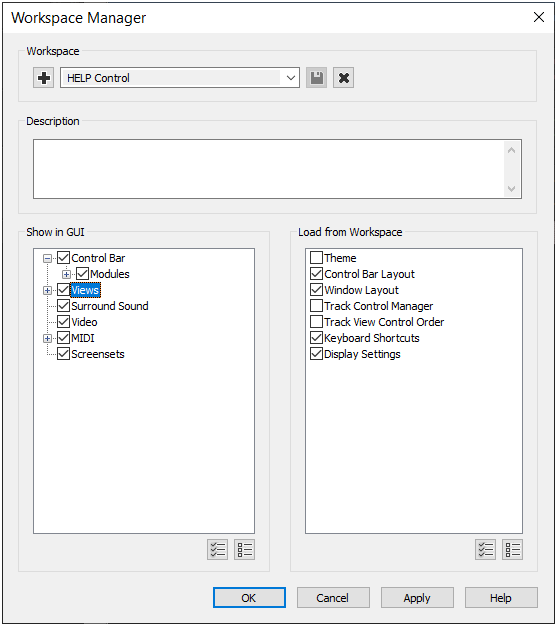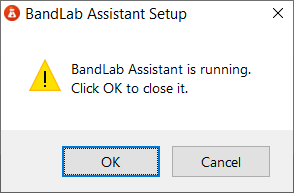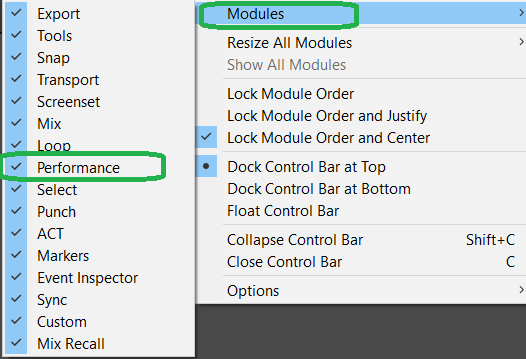-
Posts
6,062 -
Joined
-
Days Won
1
Everything posted by user905133
-
Thanks for the reply. I think your suggestion for a command that can be bound to a key for a "Play Selection" feature would be handy!!!** If the developers can add that, it would be nice to have it also listed as a possible command for the Custom Module for people like me (1) who cannot remember all the key-bindings/shortcuts and/or (2) who find menus (and the per Workspace Custom Module) useful. **if its not available already and we just can't find it
-
Would one of these work for your needs until such time as there is a "Play back selected region" function (if its not there already)?
-

Sustain pedal only works in the preferecnce menu?
user905133 replied to Sofa's topic in Cakewalk by BandLab
To diagnose what CC number and the value Cakewalk is getting from the pedal, while recording a midi track: hold down a note, press the pedal, let go of the note, then release the pedal. Look at the event list. -

Adjusting Multiple Velocity Notes Quickly
user905133 replied to Johnbee58's topic in Cakewalk by BandLab
I think there are a lot of good options/suggestions in this thread and I'd hate to see it closed to avoid further escalation. JMO. But I absolutely understand--people have to do what is right for them. Hey, I have an idea!!! Maybe some people can post some other options for manipulating velocity en masse? Hmmmm. Maybe all the options have been exhausted and the horse is not only dead, but it has been made into glue? -

Trouble with routing--long-time user, new problem
user905133 replied to Jerry Pettit's topic in Cakewalk by BandLab
I usually route TTS-1 to an audio device or a bus (routed to an audio output). When I looked up Aria Player just now, it seems to be a sound/sample library player. If so, what happens if you route the audio from TTS-1 to an audio out or to a bus and then to an audio out? It's a matter of preference, but I often like to split a TTS-1 instrument track into its components--an audio and a midi track. If you are trying to layer the TTS-1 sounds with sounds loaded into the Aria Player, does splitting the TTS-1 Instrument track (if that's what you have) allow you to route just the midi portion to the Aria Player? These are some initial thoughts because you have my curiosity (and because I use TTS-1 a bit, esp. routed to Z3ta+ FX); I defer to others who may have experience with the Aria Player. -

Adjusting Multiple Velocity Notes Quickly
user905133 replied to Johnbee58's topic in Cakewalk by BandLab
never mind -

Adjusting Multiple Velocity Notes Quickly
user905133 replied to Johnbee58's topic in Cakewalk by BandLab
Thanks for adding the proper number/formula to reverse a previous % change! Very handy formula. Let me add a suggestion that piggybacks on this (i.e., an additional option): Instead to testing different percentages consecutively to find the "right" amount, use Ctrl-Z after each attempt and try a new value. Otherwise trying to calculate an inverse of multiple successive changes will require even more advanced math. ? Also, with multiple % changes (consecutive or with intervening edits), you might bump into a value border--such as all or some velocities maxing out at 127 (or bottoming out at 0). At that point all subsequent changes will then be based on the maxed out/bottom out value and those events will all be the same. As an alternative, you could keep track with pencil and paper (e.g., tick marks) of the number of consecutive changes so you can do the right number of Ctrl-Zs when you need to. Or, you can use Cakewalk's built-in Undo History [Edit > History]: However, with many levels of undo, it might become unwieldy (hard to find the right place in the history because it just says "Modify Event Velocity"). Not saying one method is better than any other. Sometimes one method fits a person's workflow; sometimes different methods are quicker--depending of the moment. Just saying these are all options that might be useful at one point or another. -

Is it possible for the "help module" to default to expand?
user905133 replied to yeto's question in Q&A
Just did some tests to try to understand the visibility, state, and size of the Help Module (as part of my continuing attempts to learn about the interactions between locked and unlocked screen sets [per project visibility +] and Workspace storage and recall). I have not come anywhere close to mastering it, but maybe this helps: (1) "Y" [if not excluded through a Workspace or other setting] makes the Help Pane visible and/or toggles between Collapsed and Expanded (depending on other things, such as a floating Browser. (2) The visibility, state, and size can be saved on a per project basis as a locked or unlocked screen set. (3) A Workspace [global] can be created so the Help Module gets restored as part of the Workspace--either the last Workspace you used or by switching. (4) I am not sure of the minimal Workspace settings needed to restore the Help Pane visibility + settings, but I had success with: Not sure restoring Display Settings are needed for a minimal Workspace. (5) It seems to be possible to crash Cakewalk (sudden disappearance/shutdown) by changing Workspaces too much or too soon (possibly related to PC memory size). -
Just a footnote: There are some solutions to getting Bandlab Assistant to work that various people found and reported. Unfortunately, they are scattered in different threads and different sub-forums. There is even one threat that uses "Assistent." Also, I seem to recall one discussion in the "Deals" sub-forum. Not every solution works for everyone, but if all possible solutions were in one place (or if there were an index thread with links to possible solutions, people might not have to re-invent the wheel. Recent ones that I had success with at different times: (1) killing all the 0% Bandlab processes that are in Task Manager (the ones that persist after using Bandlab and closing it), (2) downloading the update manually and after getting a failed up date, discovering it failed because there were hidden dialogs open. I mention these two because they are less intrusive than things like uninstalling, rebooting, etc. and I like paths of least resistance. Note: Not saying the possible solutions should be deleted from existing threads and moved, rather that one thread with links to possible solutions in other threads might be helpful.
-
I don't know all possible methods; I am guessing there are several. Not sure if the "conflicting" videos you saw were in conflict or showed different methods. I had success mapping some buttons/sliders on my nanoKontrol with AZ Controller as a control surface. It worked for me, so I didn't look for other methods. At the same time, I also used sliders in a different scene as direct-from-device CCs which I had previously set up in the KORG controller editing software. (That is, I used two methods.)
-

Adjusting Multiple Velocity Notes Quickly
user905133 replied to Johnbee58's topic in Cakewalk by BandLab
Two things: (1) percent and (2) discrete values. Percent change is relative to the current value. So, 80% of vel=100 is 80; 120% of vel=100 is 120. You want 120% to increase all velocities selected by 20%. -

Adjusting Multiple Velocity Notes Quickly
user905133 replied to Johnbee58's topic in Cakewalk by BandLab
I like the video--very informative in a way that doesn't presume the viewer knows too much (for the most part) and not too fast or rambling. If you re-do it, three very, very small things: (1) where you talk about selecting more than one clip, you could add a few words, "by holding down . . . ." Not critical to add; just a thought. (2) (X + 50%) <> ((X+50%) -50%). So, increasing duration to 120% then reducing the new amount with an 80% does not give users the original. (3) I just checked, and the old style short cut keys still work in the CbB Event Inspector. For example, squared brackets "]" and "[" add 10 and subtract 10, respectively. Also, "[" and "]" can round the start time up and down and then shift the time. Not saying this video should be re-done, because they are very small things. Just saying IF you re-do it. Also, at first I wondered why start with the old-style SONAR interface (8.5) as I have seen in another of your videos. But I think that is good there for people who haven't used Cakewalk/SONAR since before the X series. -
Thanks for the explanation. I have also had issues with floating windows getting hidden behind other things. I use "C" to bring the Control Bar on top. Because I have different resolutions on my two monitors, I cannot duplicate what you have without changing my screen resolution. However, I was able to re-create your hidden Workspace drop down button by expanding the MultiDock to a full screen. See screen shot 3 below. In all cases, "C" brings the floating Control Bar to the top. However, I can dock the Control Bar to the main, double-wide window in such a way that I can't see it without moving things around. So, if you have a double-wide or triple-wide "main" window, it makes sense to me to do what you do--float the Control Bar. We all have different workflows, so this is not a problem for me. I have more of a problem with my Staff View Workspaces because the Tools Module cannot be placed on the top bar of the Staff View Window. Not sure this helps you find a solution that works for you, but it does confirm that we can set up things that hide important features. I guess that's the price we pay for flexibility--the ability to do things that hide what we don't want hidden. 1 2 3
-
If I understand the 3 different screen shots, the third one has the problem. It looks like either (1) you have a floating window (prochannel / track header section / track clip section) covering/blocking the window with the Workspace selection drop down button on the left side or (2) the Console / MultiDock on the right side is blocking the Workspace button. I am guessing its (2)--I think you are saying that when you make the MultiDock Full-Screen on the right side, it blocks the button because the menu bar is full screen. If that's what is going on, I will try to duplicate that, even with my non-side-by-side monitors. I think the steps you have are good and maybe staff can try to reproduce it, too. Out of curiosity, does the problem go away if you have a Workspace with the menu bar window just on the left screen? (I haven't tried; so, not sure if that gets saved with a Workspace. )
-

Adding a metronome to exsisting track
user905133 replied to RICHARD HUTCHINS's topic in Cakewalk by BandLab
I have not tried this but I have seen others mention it. Pending a reply from someone who has used it, maybe reading the documentation will help? Fit Improvisation : "The Process > Fit Improvisation command lets you take a recording and create a tempo map (with measure and beat boundaries) that fits what you played. Your performance is not changed in any way, even though the note start times and durations are adjusted to fit the new tempo map." -

BL Assistant runs in Win 7 task bar, won't launch on screen.
user905133 replied to davet's topic in Cakewalk by BandLab
Do you have the most current version of Bandlab Assistant? Evidently there is a newer one today. My attempt to update it "Failed." ? (1) Will see if I can work around that. (2) So far, the download button and the download doesn't help. (3) AHA! There was a hidden installer dialog that was blocked by another dialog. I said OK and it updated Bandlab Assistant to v. 5.1.2. Last one I had (before just now) was a verison before that--maybe v.5.1.1 or v.5.1.0. Try looking for buried dialogs. This is the one I had that prevented the installer from completing. Once I said OK, the installer finished updating Bandlab Assistant. Just a guess: (1) possibly the automatic installer failed, but left some processes on my computer. Then (2) when I clicked on "Download" and tried running that *.exe file from my browser's storage, the processes caused the manual installer to ask me to close the failed attempt processes. I know in the past I have had success with Bandland/Cakewalk working by manually killing the leftover processes via Task Manager. -
Do you mean you have one instance of Cakewalk stretched across two monitors? I am trying to understand how the Workspace button would not be visible. Since I have my monitors at different resolutions, I have Cakewalk open up on my main monitor and have parts of Cakewalk placed on the second monitor. That way the Workspace button/dropdown is always in the upper right of my main monitor. One of my Workspaces has a full Console [in the MultiDock] on monitor 2. If I press D, the MultiDock/Console toggles between minimized and full screen. Above: this Workspace opens with some plug-ins on monitor 2 based on the project loaded. Pressing D then D again places the MultiDock/Console on top of the plug-ins. I have a different Workspace with just the Console on monitor 2. (The black space on the top left is because the monitors have different resolutions and that's the way PrntScrn captures it. I don't see the black space on the monitor.)
-

Tracks out of order or just confused?
user905133 replied to James McKee's topic in Cakewalk by BandLab
One technique I use is to have multiple channels set up with different patches on a hardware or software synth and just change the transmitting channel on my keyboard. So, that can be an intentional performance/recording strategy. Just a matter of personal preference. -

MIDI Recording Including Tempo Changes
user905133 replied to designserve's topic in Cakewalk by BandLab
Hmmmm. I have never used SMPTE (except for testing and deciding it was not what I needed ages ago--pre-Windows CMS interface + a striped tape), but with all the cross-synchonizing devices that have come out since, might SMPTE offer an even more precise option? -

MIDI Recording Including Tempo Changes
user905133 replied to designserve's topic in Cakewalk by BandLab
I have had SONAR synced to an external MIDI clock and I can see the value (based on your description) of not only keeping in sync while recording, but also mapping the external clock to a tempo track. Not sure if the developers ever considered implementing that and decided it would take away resources from recording, audio processing, etc. The workaround to record a click track and then do a Fit Improvisation / create tempo map sounds like a decent option as @David Baay suggested. I wonder if Cakewalk can record the metronome to a metronome track for that purpose (possibly with the audio not being outputted at any audible level). If so, maybe it would require a single-pass operation to make a tempo map. This assumes the performers are synced to a BPM/midi clock that can be reliably captured as a metromone/click. I know in earlier versions of Cakewalk/SONAR it was possible to record the Metronone onto an audio track--even by accident! -
Does this help?
-

Why do some VSTis create so many "audio tracks"
user905133 replied to Nigel Mackay's topic in Cakewalk by BandLab
Are any of the patches multisamples with different zones? For example, I have soft synths (and gear) that have orchestral instrument groups arranged in different ranges across the keyboard. With a single patch like that someone might want separate tracks--First Violins, Second Violins . . . Basses. Just as guess. -
Good question. All my Workspaces come up with [Workspace]. So, I unchecked "Track Control Manager" from the "Load from Workspaces" column. That seems to work for me. It keeps the Workspace from changing what you have. So if you have "Custom" as the previous Track Control configuration, when you switch Workspaces, it should stay as "Custom." BTW, it looks like the Track Control setting can be saved with Screensets. Thank you for asking!! I have wondered how to do that myself, but never allowed myself the time to explore it. You gave me the perfect opportunity to move it to the top of my "to-do" list. So, if I shut down Cakewalk with (1) my "==> MIDI" set of track widgets on the Track Control drop down button and (2) my "TEST" Workspace as my last Workspace before shutting down, "==> MIDI" is there when I load a new project. PS: I am not sure if we can force a specific set of Track Controls from a Workspace.
-

How do I get CPU performance meter to show in control bar?
user905133 replied to yeto's question in Q&A






